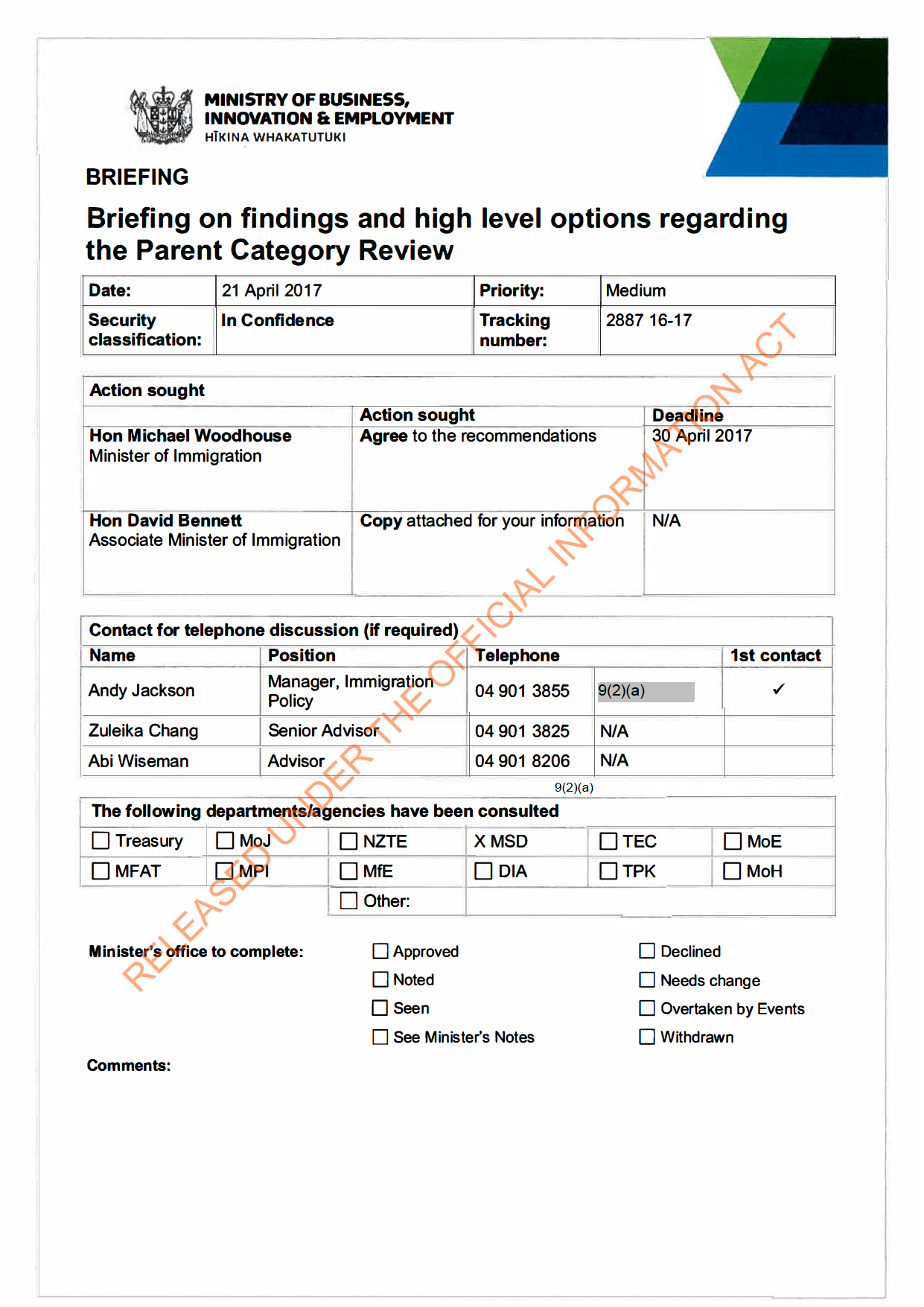
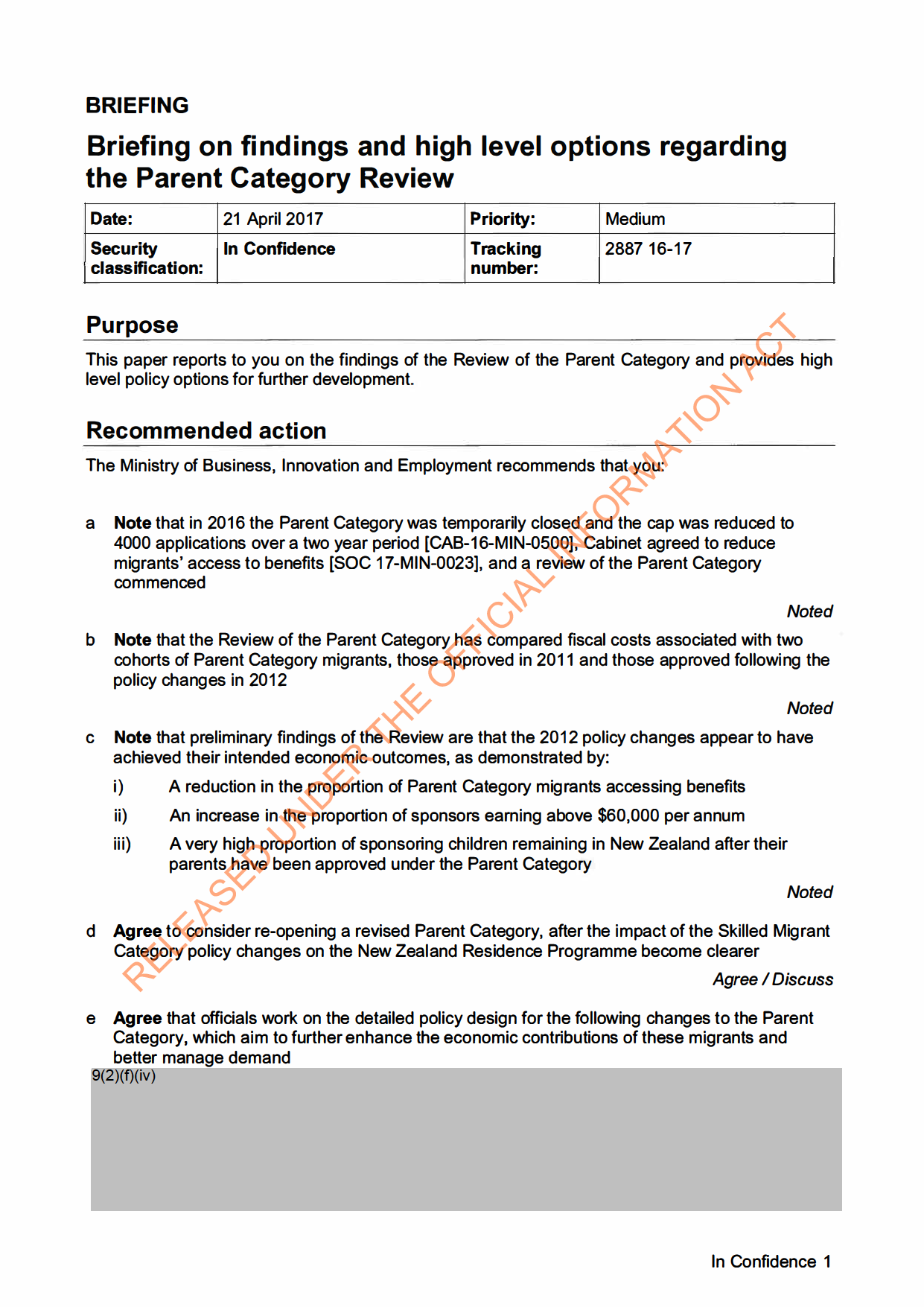
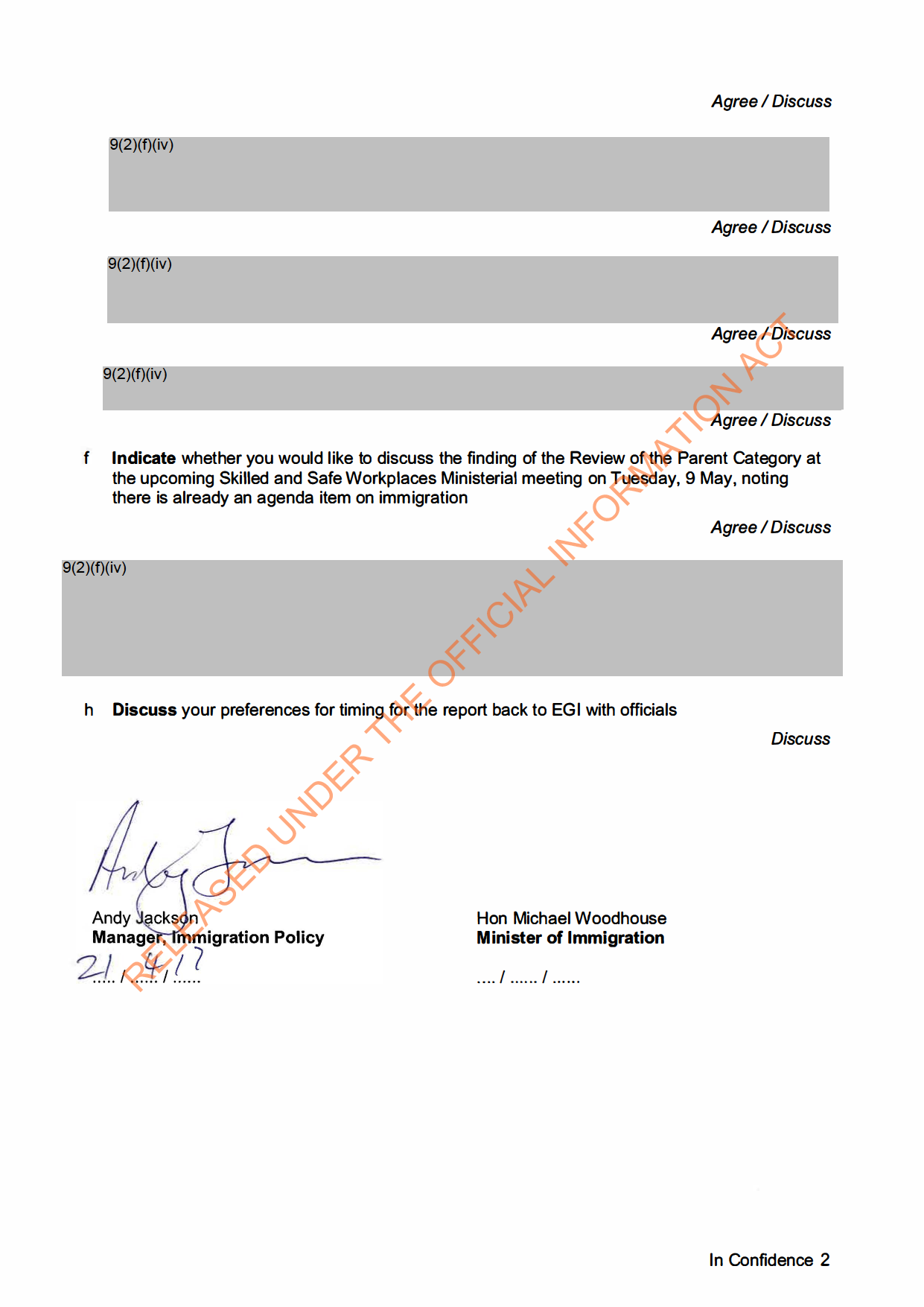

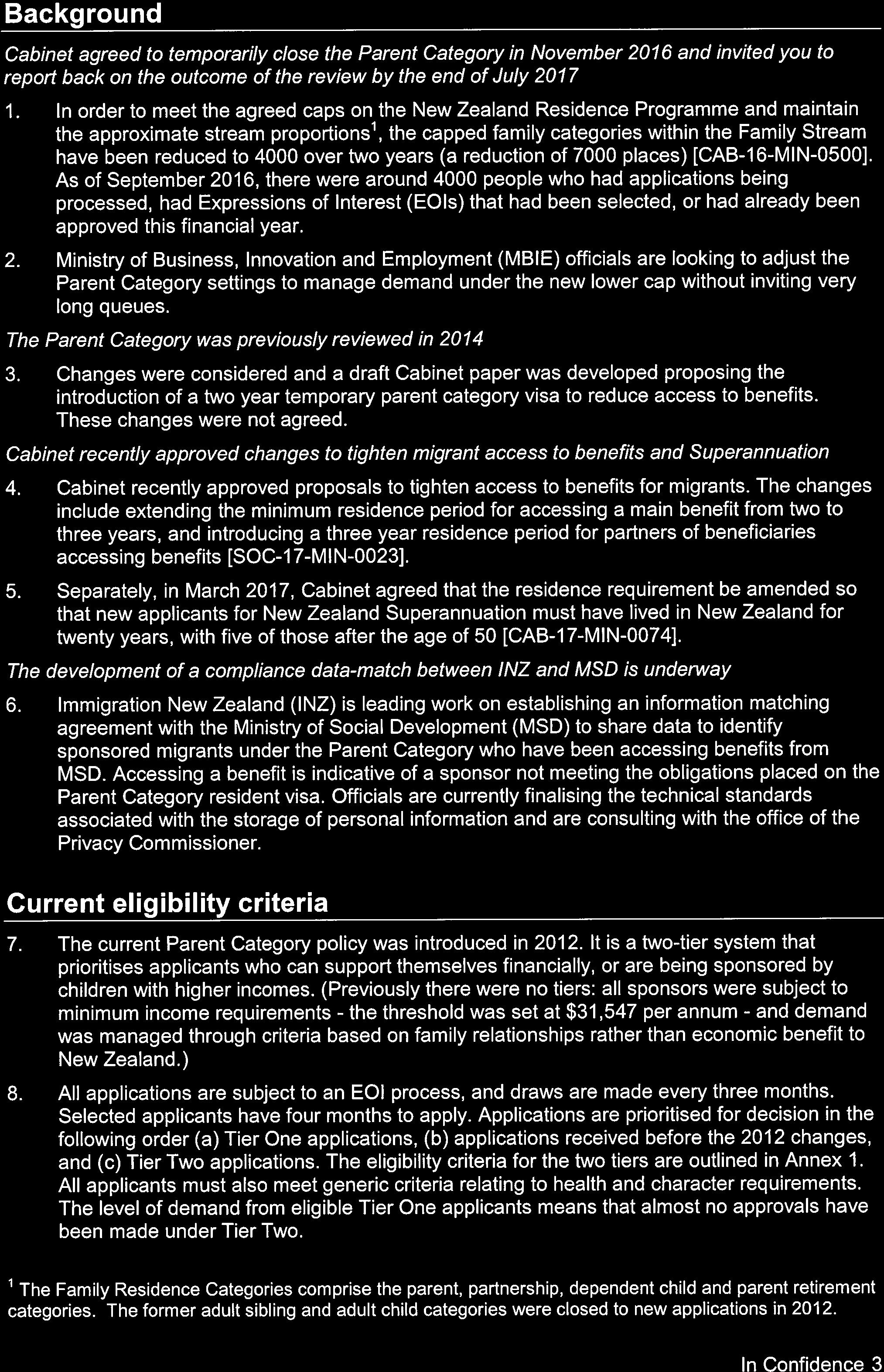
ACT
INFORMATION
RELEASED UNDER THE OFFICIAL
 Preliminary findings of the recent Review of the Parent Category
The /DI analysis compared Parent Category visa holders approved in 2010 and 2012
Preliminary findings of the recent Review of the Parent Category
The /DI analysis compared Parent Category visa holders approved in 2010 and 2012
9.
The 2017 Review of the Parent Category analysed data in the Integrated Data Infrastructure
(IOI). The IOI is a large research database containing data from a range of government
agencies, Statistics New Zealand surveys and non-government organisations2.
10.
The IOI analysis looked at the fiscal impacts of two cohorts of Parent Category
migrants. These two cohorts comprise a baseline cohort that arrived on any Parent Category
visa in 2011 3 (the "2011" or "first" cohort), and a second cohort that arrived on a Parent Tier
One or Tier Two visa between 1 July 2012 and 30 June 2013 (the "June 2013" or "second"
cohort). The second cohort was approved under the current Parent Category policy
conditions, following the changes that were implemented in 2012. The final results of the IOI
analysis will be available early May 2017.
ACT
The 2012 policy changes appear to have achieved their intended outcomes
11.
The 2012 policy changes established an objective for the Parent Category, as set out in
Immigration Instructions at F4.1.1:
The objective of the Parent Category is to support family connections, in order to:
a.
progress New Zealand Government economic objectives for immigration; and
b. attract and retain skilled and productive migrants, while also limiting the costs of
New Zealand Government benefits.
INFORMATION
12. The IOI analysis indicates that the 2012 changes to policy settings have improved the
outcomes of the category in terms of these economic objectives (specifically, a reduction in
the fiscal costs of Parent migrants and an increase in the number of high income sponsoring
children).
The second cohort had much lower uptake of benefits during the sponsorship period
13. There appears to have been negligible uptake of benefits during the period when conditions
are placed on the Parent Category visa for the second cohort ( 1 per cent accessed the
unemployment benefit and accommodation supplement during their first two years in New
Zealand). This compares with indications that about a third of the first cohort accessed the
accommodation supplement and/or first tier benefits within two years of arriving in New
Zealand with a Parent Category residence visa.
14. The most common type of tier one benefit accessed over five years for the first cohort was
Job Seeker Support (20 per cent) followed by the emergency benefit ( 16 per cent). There
was no recorded use of Job Seeker Benefit by the second cohort.
Both cohorts showed high numbers of sponsors remaining in New Zealand
15.
Both cohorts showed a relatively high rate of sponsoring children remaining in New Zealand
after their parents arrived. However, for sponsors of the second cohort, retention data is only
available for the first year after their parent arrived (98 per cent were still in New Zealand).
This appears to be slightly lower for sponsors of the first cohort (94 per cent were still in New
RELEASED UNDER THE OFFICIAL
Zealand after six months, and about 90 per cent after 36 months).
2 The data, including results, is anonymised to protect the privacy of individuals. All the IDI analysis findings
have been rounded to base 3, for example, a count of 30 people meeting a certain criteria could be rounded
from between 28 and 32 to protect the anonymity of individuals. Where the counts of people are very low,
they are suppressed. Access to the anonymised data used in this study was provided by Statistics New
Zealand in accordance with security and confidentiality provisions of the Statistics Act 1975, and secrecy
provisions of the Tax Administration Act 1994.
3 The first cohort (4,026 visa holders) arrived on any parent visa between 1 December 2010 and 30
November 2011 and the second cohort (720 visa holders) arrived on a parent tier one or parent tier two visa
between 1 July 2012 and 30 June 2013.
In Confidence 4

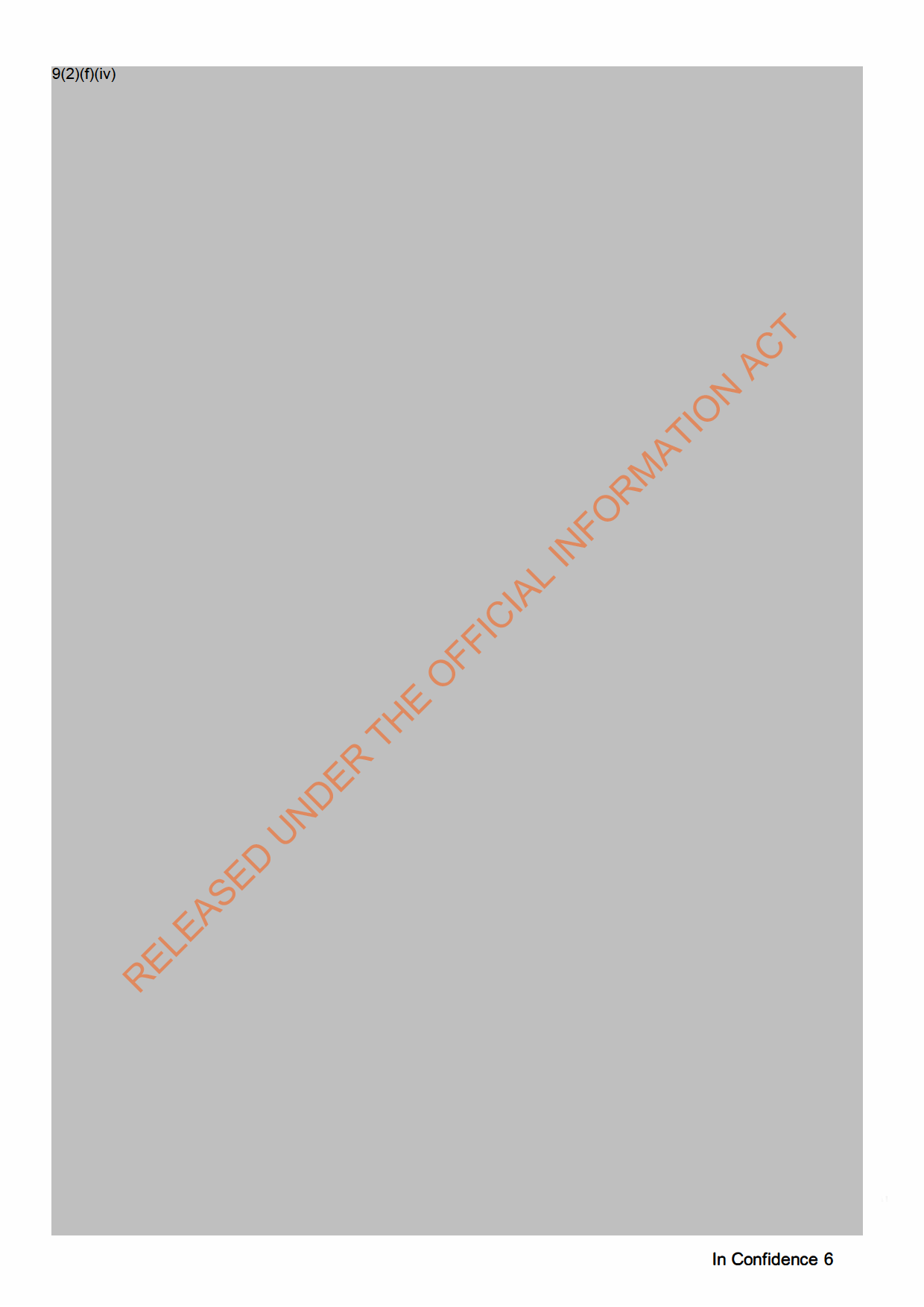
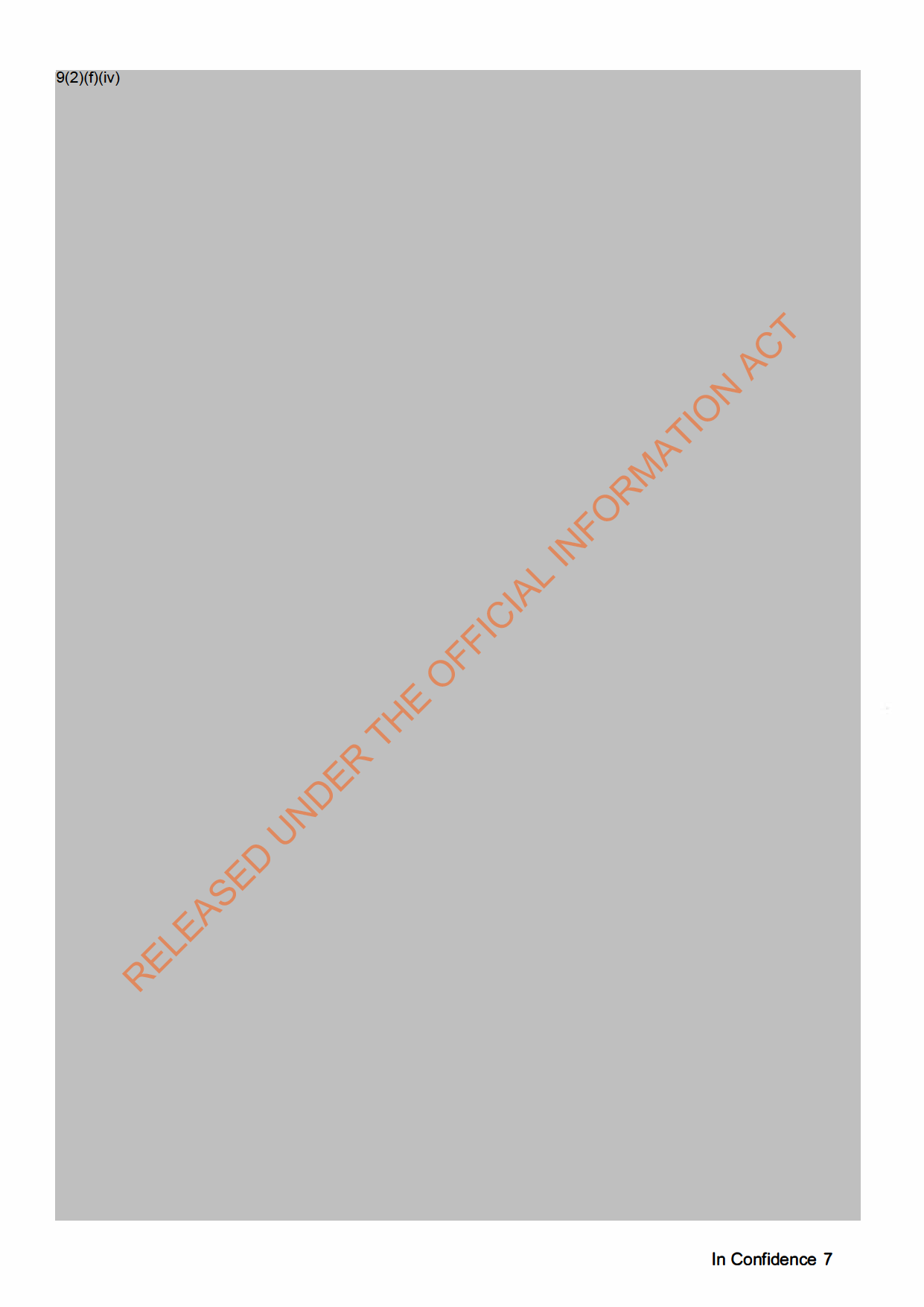
 Proposed next steps
Proposed next steps
40. Subject to your agreement to the recommendations, we will follow the timeline below:
Date
Finalised report on IOI analysis of fiscal costs Early May 2017
of Parent Category migrants to Minister
SSW Ministers meeting, including
Tuesday, 9 May 2017
immigration discussion6
Draft Cabinet paper to Minister
Mid-June 2017
ACT
INFORMATION
RELEASED UNDER THE OFFICIAL
6 At your request, officials could provide you with a briefing to inform a discussion about the findings of the
IOI analysis.
In Confidence 8

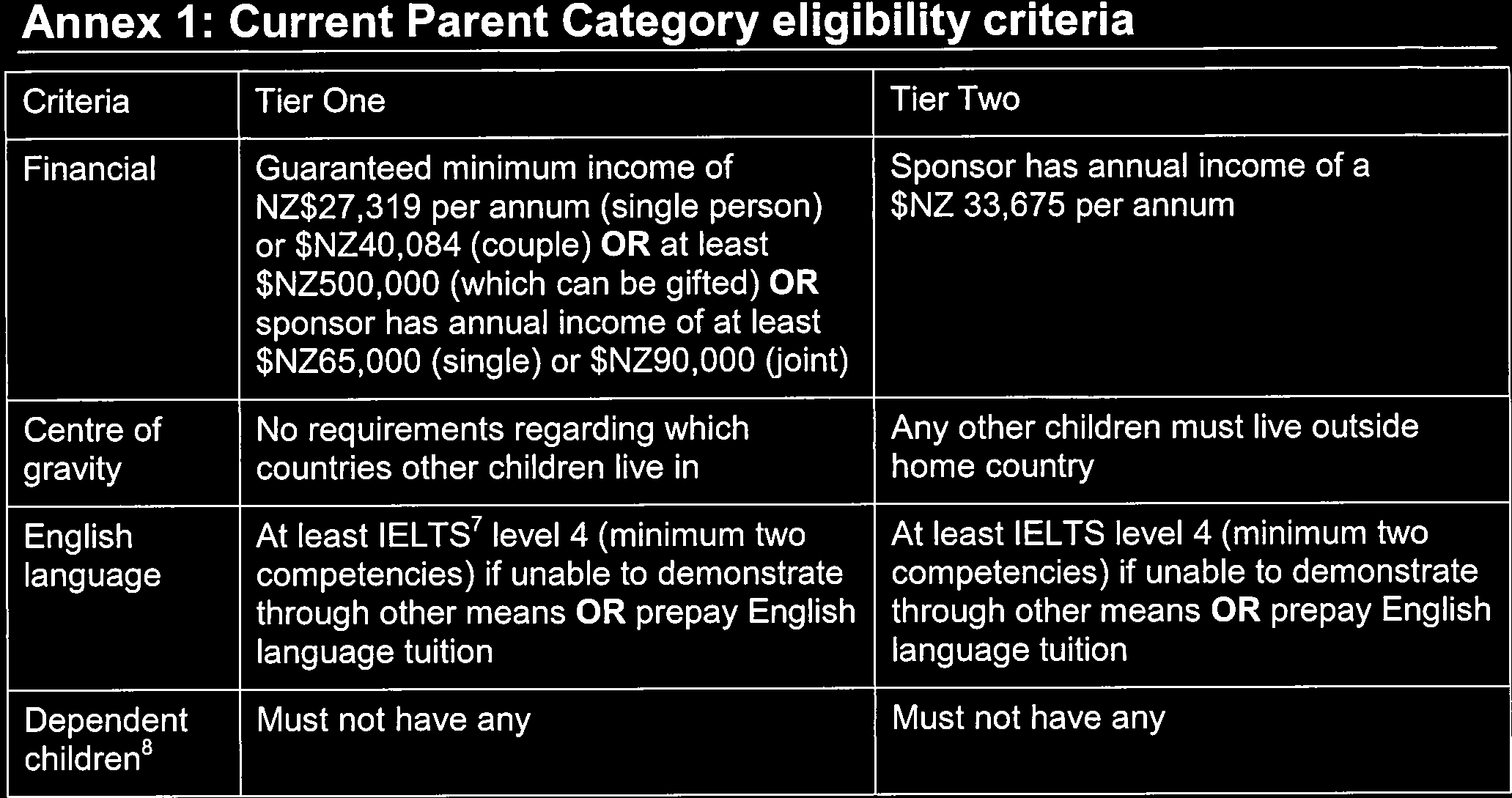



ACT
INFORMATION
RELEASED UNDER THE OFFICIAL














